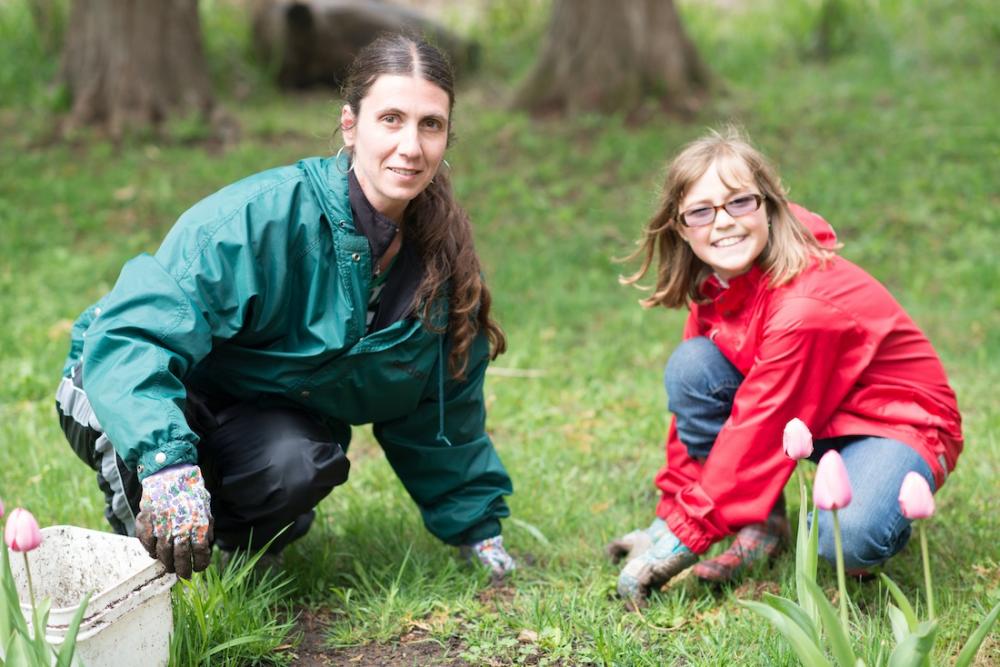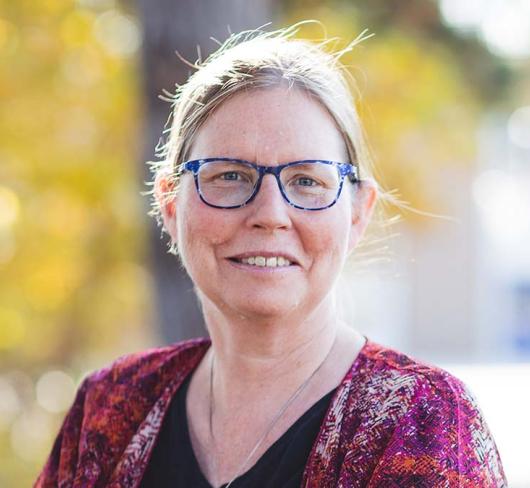
Go for Green!
Go for Green is a bi-annual event at Millgrove School that proves a small school can accomplish big things. It is an opportunity for students, teachers and other community members to collaborate to take care of the gardens and the playground that we have worked so hard as a community to develop over the years. Our tiny, rural school northwest of Burlington has a full time staff of only nine and a student population of 180. Most GPS devices can’t find us and if you’re out for a country drive you could easily cruise right by. What a shame that would be, though. Thanks to the community and Go for Green, Millgrove School is a place where students bounce happily out onto an incredible playground daily – a paradise for children to learn and play.
Our playground wasn’t always paradise. Change started in 1989 when some teachers began working on the playground with students and members of the community. To start, students were asked to create wish lists, sharing their vision of what the playground could become. That same year, staff applied for and were awarded grants from Evergreen Learning Grounds and TD Canada Trust Friends of the Environment Foundation. Many people in the community contributed to the transformation of our grounds. Soon enough, the playground was equipped with trees, a massive sandbox, climbers, monkey bars, a Carolinian Garden with meandering paths, benches, a Peace Garden for quiet play and reflection, and a Learning Garden equipped with benches for outdoor lessons.
Together we decided that a bi-annual event would go a long way in maintaining and building upon our wonderful new playground. Staff called this event “Go for Green.” Every October and May the Millgrove school community – parents, staff, students, community volunteers — all come together to develop and care for our playground.
Cathy Boocock, a Millgrove parent, led Go for Green last May. Cathy and her team met weeks ahead of time to set a date and decide on projects needing to be done. The list included: fresh sand for the sandbox, weeding, planting new plants (with a focus on attracting butterflies), putting down mulch, and fixing a fence in the Carolinian Garden. A schedule was set for the day and staff signed their classes up for hour-long time slots.
On the day of Go for Green, volunteers arrived well before the students with tools in hand. Most were Millgrove parents, but former students and their parents as well as members of the local horticultural club have been known to show up as well.
Soon enough, classes started coming out and diving into various jobs. This year, the grade 1 class spread the new sand out in the sandbox. After a quick but important lesson on weeds versus flowers the grade 2s and 3s pulled weeds in the Carolinian Garden, planted butterfly bushes, and cleaned up the baseball diamond. Our grade 5s hauled wheelbarrows full of mulch and spread it throughout our gardens. Our JK and SK classes planted and weeded in the Peace Garden, delighting in the swaths of tulips that had popped up from bulbs planted during our October Go for Green.
As the work was being done, teachers took the opportunity to talk to their students about how to identify and care for plants and to explain their lifecycle. Students learned about native versus non-native plant species; they discussed why we spread mulch, why we pull weeds and how to identify various insects. Dialogue naturally extended to how we can take better care of our Earth.
Thanks to Go for Green, our playground is an extension of the classrooms, providing engaging, hands-on learning at its best. Many connections are made to the science curriculum, particularly Understanding Life Systems. When our grade 3 students study Growth and Changes in Plants our playground provides experiential learning. Our students sketch the parts of plants outside in our playground. They plant seeds and watch them grow. They understand why plants are important and how humans can be helpful or harmful to them.
When our grade 2 students study Growth and Changes in Animals, they sit in the Learning Garden and sing “Mariposa Adios” as they release their monarch butterflies. We hope our new milkweed plants and butterfly-friendly flowers will help to support this fragile species. Our kindergarten classes and grade 1s go for walks in the playground, searching for signs of spring. They return to their classrooms, where they make lists and draw pictures of what they saw.
Classes use our gardens as inspiration for many art projects. Students create posters with environmental themes, sculptures of the various insects they discover while playing, and art showcasing the flowers that grow in our playground. They create giant Earth Day-inspired chalk murals on the blacktop.
Language-based activities naturally extend to the playground. Some classes write persuasive letters about taking care of the Earth, while others classes complete procedural writing on how to plant a seed. Favourite books such The Great Kapok Tree by Lynne Cherry, A Tiny Seed by Eric Carle, and The Earth Book by Todd Parr are given much deeper meaning in the context of our playground.
Beyond the curriculum, Go for Green teaches Millgrove students the importance of citizenship, responsibility, and teamwork. Students have a voice in choosing Go for Green projects. Every student participates in Go for Green and, after a day of hard work, students are asked to reflect on tasks completed as well as look ahead to possible projects for the next Go for Green. By working on the playground, they take ownership of it. I am proud to say our playground has zero litter and zero vandalism. Students learn that teamwork gets the job done. Our hope is they take this learning beyond our tiny community to be good citizens of Earth wherever their adventures take them.
For those of you whose playgrounds are more pavement than paradise, perhaps the work we do at Millgrove School will inspire you. Form a committee of like-minded people who would like to make change. Assess the needs of your playground and decide on some projects. Baby steps are a great way to start. Remember, a small change can have great impact. Apply for grants (see sidebar), ask for donations from local businesses, and set a date to Go for Green. (Choosing a rain date is a good idea too.) Create a schedule for the day and have classes sign up. Get parents and your community involved.
Go for it! Go for Green!
Become an EcoSchool
Is your school ready to become an EcoSchool? EcoSchool certification is free and open to all publically funded schools. It is a way to celebrate and recognize your school’s environmental efforts. To receive EcoSchool certification your school must apply. Points are awarded for action in six key areas: Teamwork and Leadership, Energy Conservation, Waste Minimization, School Ground Greening, Curriculum, and Environmental Stewardship. In the 2012–2013 school year 1,215 schools in 44 school boards across Ontario achieved EcoSchools certification. The website ontarioecoschools.org/become_an_ecoschool has information on how to become an EcoSchool and excellent environmental-themed resources, including a School Ground Greening Guide.
Jodie Howcroft is a member of The Hamilton Wentworth Teacher Local.

